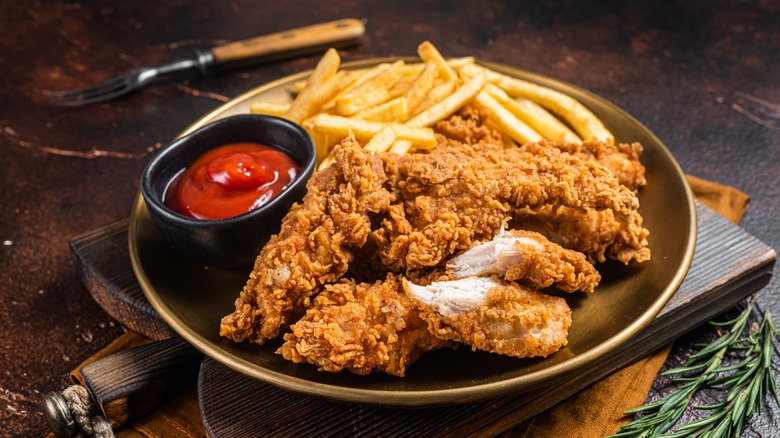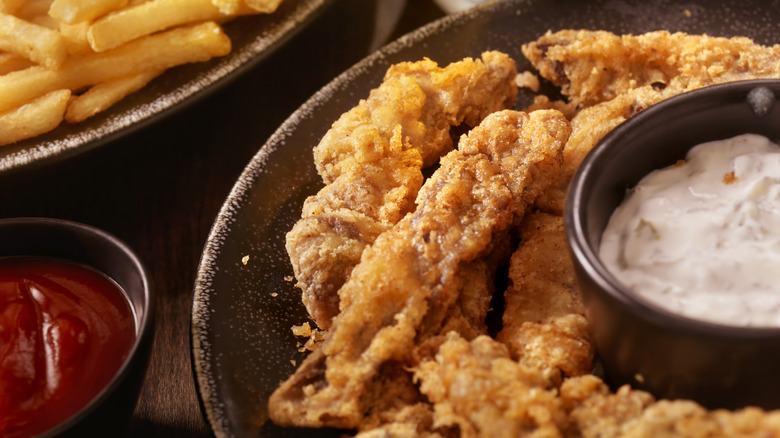No, Chicken Fingers And Chicken Tenders Aren't The Same Thing Really
Words are unique. Each one exists because it is different in some way from all others. While it is convenient and colorful to use words interchangeably, it can lead to confusion. Especially in the world of food and cooking, where precision can be critical. For example, did you know that chicken fingers and chicken tenders are two different things?
Both chicken fingers and chicken tenders can also be called chicken strips. This is because they are made by cutting the meat into strips. The difference between the two, however, is distinguished by where that meat comes from. A chicken finger is a strip that can be cut from any part of the chicken breast. On the other hand, a chicken strip can only be officially called a chicken tender (or tenderloin) when it comes from a muscle located beneath the breast that is called the pectoralis minor or inner filet.
Why knowing the difference between chicken fingers and chicken tenders matters
While it might not seem important to know the difference between chicken fingers and chicken tenders, there are a couple of crucial reasons why you should. First, if budget is a concern, chicken fingers are less expensive. This is because chicken tenders are not as abundant as chicken fingers and they require more processing. Second, breast meat is dramatically different from the inner filet. And not in the way you think. Despite the lower price, chicken fingers may be the superior choice. This is because you get more — chicken tenderloins are smaller and thinner than chicken breasts. And the value doesn't stop at size. Judging from USDA data, a 100-gram portion of chicken breast offers an array of nutrients, such as vitamin B-6, magnesium, potassium, calcium, and zinc. Its tender counterpart appears not to offer those same nutrients, which for the most part are not even listed.
Additionally, people with dietary concerns need to know that chicken fingers have significantly less sodium and calories when compared to chicken tenders. However, it's important to keep in mind that because chicken fingers can also come from the inner fillet of the breast, they may also count as chicken tenders. How a restaurant or individual prepares the meat may also factor into the nutritional content, so stated differences may vary.

